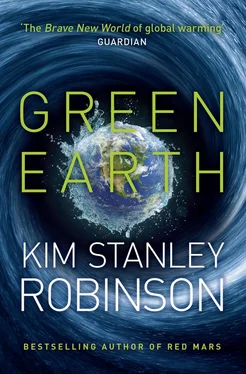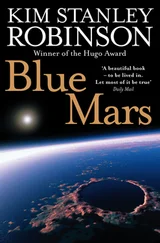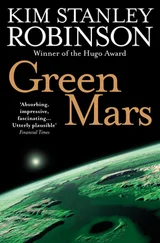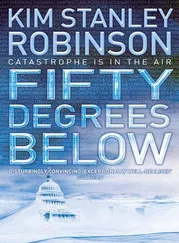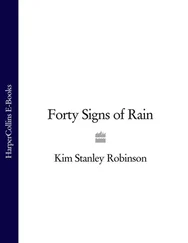THE SCIENCE IN THE CAPITAL TRILOGY
FORTY SIGNS OF RAIN
FIFTY DEGREES BELOW
SIXTY DAYS AND COUNTING

Harper Voyager an imprint of
HarperCollins Publishers Ltd
1 London Bridge Street
London SE1 9GF
www.harpervoyagerbooks.co.uk
First published in Great Britain by Harper Voyager 2015
Forty Signs of Rain copyright © 2004, 2015 by Kim Stanley Robinson
Fifty Degrees Below copyright © 2005, 2015 by Kim Stanley Robinson
Sixty Days and Counting copyright © 2007, 2015 by Kim Stanley Robinson
Cover layout design © HarperCollins Publishers Ltd 2015
Cover design and illustration: Wes Youssi/M80 Design, based on images © Shutterstock.com
Kim Stanley Robinson asserts the moral right to be identified as the author of this work.
Forty Signs of Rain , Fifty Degrees Below , and Sixty Days and Counting were originally published separately in hardcover and in different form in the UK by Harper Voyager in 2004, 2005, and 2007.
A catalogue copy of this book is available from the British Library.
This novel is entirely a work of fiction. The names, characters and incidents portrayed in it are the work of the author’s imagination. Any resemblance to actual persons, living or dead, events or localities is entirely coincidental.
All rights reserved under International and Pan-American Copyright Conventions. By payment of the required fees, you have been granted the non-exclusive, non-transferable right to access and read the text of this e-book on screen. No part of this text may be reproduced, transmitted, down-loaded, decompiled, reverse engineered, or stored in or introduced into any information storage and retrieval system, in any form or by any means, whether electronic or mechanical, now known or hereinafter invented, without the express written permission of HarperCollins.
Source ISBN: 9780008139544
Ebook Edition © November 2015 ISBN: 9780008139551
Version: 2015-10-13
Contents
Cover
Title Page
Copyright
Introduction by the Author
PART ONE: FORTY SIGNS OF RAIN
Chapter 1 : The Buddha Arrives
Chapter 2 : In the Hyperpower
Chapter 3 : Intellectual Merit
Chapter 4 : Science in the Capital
Chapter 5 : Athena on the Pacific
Chapter 6 : The Capital in Science
Chapter 7 : Tit for Tat
Chapter 8 : A Paradigm Shift
Chapter 9 : Trigger Event
Chapter 10 : Broader Impacts
PART TWO: FIFTY DEGREES BELOW
Chapter 11 : Primate in Forest
Chapter 12 : Abrupt Climate Change
Chapter 13 : Back to Khembalung
Chapter 14 : Is There a Technical Solution?
Chapter 15 : Autumn in New York
Chapter 16 : Optimodal
Chapter 17 : The Cold Snap
Chapter 18 : Always Generous
Chapter 19 : Leap Before You Look
Chapter 20 : Primavera Porteño
PART THREE: SIXTY DAYS AND COUNTING
Chapter 21 : A New Reality
Chapter 22 : Cut to the Chase
Chapter 23 : Going Feral
Chapter 24 : The Technological Sublime
Chapter 25 : Undecided
Chapter 26 : Sacred Space
Chapter 27 : Emerson for the Day
Chapter 28 : Terraforming Earth
Chapter 29 : The Dominoes Fall
Chapter 30 : You Get What You Get
Praise
Acknowledgments
About the Author
Books by Kim Stanley Robinson
About the Publisher
Peter Matthiessen, who died in 2014, was a great writer. His non-fiction is superb, and his novels are even better: At Play In the Fields of the Lord is an epic thing, and Far Tortuga is brilliant and moving, one of my favorite novels. You read those books, you’ve lived more lives.
His third great novel has an unusual publishing history. It first appeared as a trilogy, in volumes called Killing Mister Watson, Lost Man’s River, and Bone By Bone . Then about ten years later it reappeared in a single volume, considerably compressed by Matthiessen, titled Shadow Country . When I picked up that book in a bookstore and read Matthiessen’s foreword explaining what he had done, I immediately said to myself, “I want to do that with my climate trilogy.”
This reaction surprised me. I had not been aware that I harbored any longing to revise those books. When I finish a novel I generally move on without a lot of looking back. On completion I feel a glow, as when finishing any job, but it’s also a little sad, because the characters stop talking to me. It’s like being Calvin and watching Hobbes turn back into a stuffed doll. Could be tragic, but in my case there is a solution, which is simply to start another novel. That’s what I do, and on it goes.
But in the case of my climate trilogy, which was published between 2004 and 2007 under the titles Forty Signs of Rain, Fifty Degrees Below , and Sixty Days and Counting , it appeared that I still had the urge to tinker. After some reflection it began to make sense. Almost fifteen years have passed since I started that project, and in that time our culture’s awareness of climate change has grown by magnitudes, the issue becoming one of the great problems of the age. In this changed context, I had the feeling that quite a few of my trilogy’s pages now spent time telling readers things they already knew. Some of that could surely be cut, leaving the rest of the story easier to see.
Also, my original idea had been to write a realist novel as if it were science fiction. This approach struck me as funny, and also appropriate, because these days we live in a big science fiction novel we are all writing together. If you want to write a novel about our world now, you’d better write science fiction, or you will be doing some kind of inadvertent nostalgia piece; you will lack depth, miss the point, and remain confused.
So I felt then and still feel that my plan was a good one; but there was a problem in it that I didn’t fully gauge while I was writing. Science fiction famously builds its fictional worlds by slipping in lots of details that help the reader to see things that don’t yet exist, like bubble cities under the ice of Europa. Just as famously, novels set in the present don’t have to do this. If I mention the National Mall in Washington D.C., you can conjure it up from your past exposure to it. I don’t have to describe the shallowness of the reflecting pools or the height of the Washington Monument, or identify the quarries where that monument’s stone came from. But the truth is I like those kinds of details, and describing Washington D.C. as if it were orbiting Aldebaran was part of my fun. So I did it, but afterward it seemed possible that occasionally I might have gone too far. Every novel is like a ship and has its own Plimsoll line, and if you load it past that line, a storm can sink it. Readers may be inclined to abandon ship, or refuse to get on in the first place.
So with those considerations in mind, I went through my text and cut various extraneous details, along with any excess verbiage I could find (and I could). Inspired by Matthiessen, who compared his middle volume to a dachsund’s belly, and shortened his original 1,500 pages to 900, I compressed about 1,100 pages to about 800. Nothing important was lost in this squishing, and the new version has a better flow, as far as I can tell. Also, crucially, it now fits into one volume, and is thereby better revealed for what it was all along, which is a single novel.
Читать дальше
